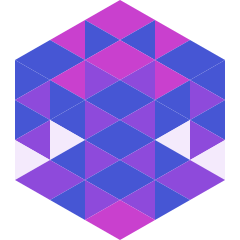Why Become Ambidextrous?
According to the most reliable estimates, about 90% of the world population is right-handed[1]. In most cases, this preference develops spontaneously during childhood, but it is also influenced by cultural and educational factors.
Until a few decades ago, it was common for the use of the right hand to be encouraged (if not imposed) already in early school years. In some educational contexts, writing with the left hand was discouraged or even actively corrected.
These practices now seem outdated, but they invite us to reflect: why do we take for granted the exclusive use of one hand for many daily activities, such as writing?
Think about how unusual it would sound to ask:
Do you use your right ear or left ear to listen?
Do you prefer to walk with your right leg or your left leg?
Yet, for writing — which is a central activity in daily life — the predominance of a single hand is considered the norm.
The Advantages of Ambidexterity
Developing the ability to use both hands in a coordinated way can offer practical advantages. Think of common situations, such as cutting bread in a busy kitchen or grabbing an object with the non-dominant hand when the other is occupied.
In these cases, being able to rely on adequate dexterity with the opposite hand can facilitate the execution of the action, reduce motor load, and improve an individual's adaptability to the environment.
In the neuropsychological field, this type of flexibility is sometimes called functional ambidexterity, and it can contribute to improved motor coordination, concentration, and bodily lateralization.
Exercises to Train Your Second Hand
Anyone can start strengthening their less dominant hand through simple daily exercises, such as:
- Writing short words or sentences.
- Brushing your teeth or using utensils with the opposite hand.
- Opening doors, pouring liquids, or handling light objects.
The goal is not to replace the dominant hand, but to train the mind and body to work more symmetrically. This can improve motor balance and foster greater awareness of movement.
If you're interested in learning more, we have gathered a series of introductory exercises to start training your non-dominant hand, ideal even for absolute beginners.
Becoming ambidextrous does not mean "canceling" natural dominance, but exploring new ways of interacting with the environment. This journey can stimulate brain plasticity, enhance cognitive abilities, and provide useful tools for everyday life.
From Theory to a Complete Path
Daily exercises like brushing your teeth or writing a few words with your non-preferred hand are a fantastic way to start stimulating the brain. They are the first small steps into a new and fascinating world.
But if you feel the spark has ignited in you and now want a full guided program to explore this skill, I have created exactly what you need.
In my new book, "How to Become Ambidextrous", I have structured a complete path that takes you by the hand. It starts with a thorough test to discover your unique potential and continues with dozens of exercises for writing, drawing, and coordination, designed to give you concrete and tangible results, while having fun.
- Il contrario di mancino è... destro, destrimano o destrorso? - Accademia della Crusca
- Scrivere con la mano sinistra. Come re-imparare a scrivere da zero - Bella Scrittura
- Persone ambidestre: i vantaggi - Pazienti.it
- Can Training to Become Ambidextrous Improve Brain Function? - Scientific American
- Ambidexterity: Can Two-Handedness Improve Your Brain - memoryOS
Comments ( 2 )


Very interesting, thanks.

I am ambidextrous.